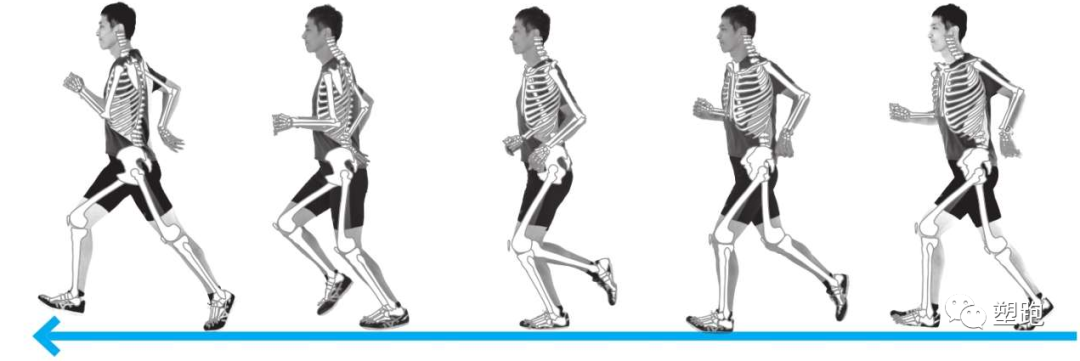Because of their short legs, such people’s body is stable and won’t shake even if they swing their lower limbs greatly.
Different bone types have different efficient running posture.
When your lower limbs swing downward, the posterior thigh muscles at the back of your thigh exert force.
You can use the power of torso rotation to drive the pelvis to move forward.

Type 2 twisting transformation running posture this running posture refers to the posture in which the upper body rotates left and right and uses the force generated by the upper body swing to drive the lower limbs.
Some people may think that the upper body will shake when the whole torso is twisted, but as long as the axis of your twisting remains stable, the upper body can rotate moderately.

This type of skeleton is suitable for the running posture of left-right rotation of the upper body and lower limbs.

Finally, talk about the piston running posture.
What kind of running position do you think you are suitable for? If you are faced with the following troubles, such as it is difficult to improve the running speed, it is difficult to increase the running distance, you feel difficult to breathe, the noise of “Bata, Bata” during running, your legs become thicker, your toenails become black, and your legs are easy to cramp, it means that you have not adopted a running posture suitable for your bone type.
Most African athletes with long legs adopt this running posture, and most of Japan’s first-class athletes also adopt this running posture.
If you use this running posture, you can reduce the stride, swing your thighs back and forth, and touch the ground with the whole sole of your foot…
At the moment when your feet touch the ground, the soles of your feet convey the force to the ground and convert it into the driving force for running forward.
This running posture is suitable for the body shape with basically the same length of upper body and lower limbs.
Type 1 swing running posture this running posture refers to the posture of swinging the lower limbs back and forth.
It is characterized in that the legs swing back and forth like a pendulum, so as to generate driving force, and the feet run forward like picking the ground.
This bone type is suitable for the running posture of swinging forward and backward from the hip joint to the whole lower limb.
Type 3 piston running posture this running posture refers to the posture of running up and down the thighs.
It is characterized by heel landing, large-scale running and slightly upward face.
This kind of running posture is suitable for people with upper body length.
First of all, most Japanese are suitable for swing running posture.
Secondly, more Japanese are suitable for twisting and transforming running posture.
If you run in this position, you need to land on the front soles of your feet and run with your chest slightly raised.

Its standard posture is that the lower limbs are linked up and down like a piston.
Next, let’s take a look at the running posture suitable for different bone types.
